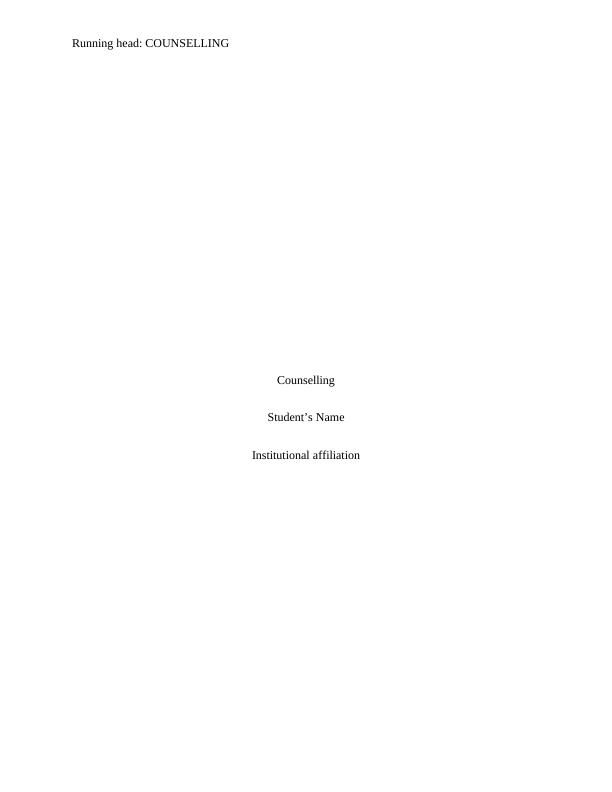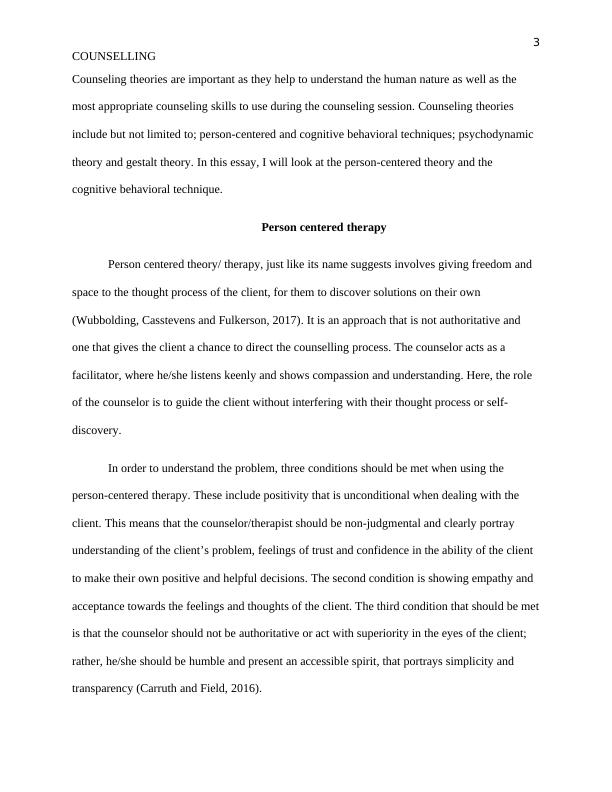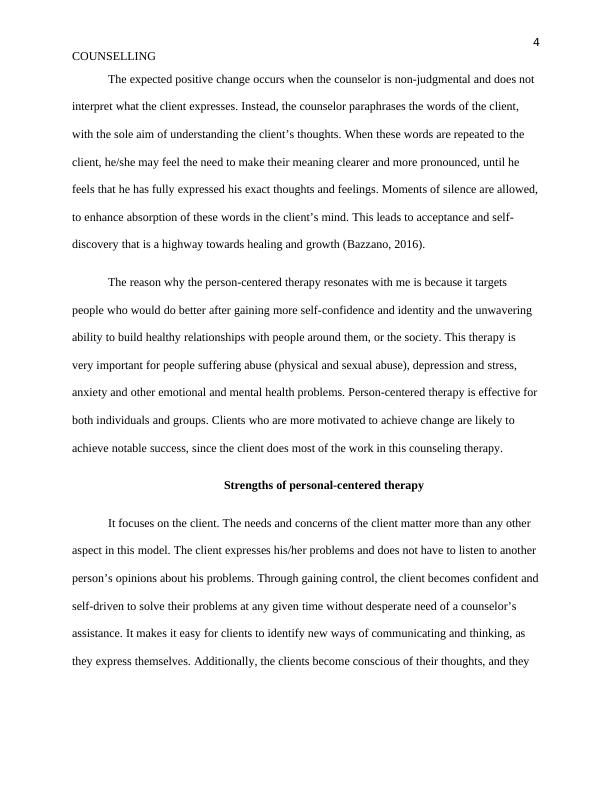Counselling: Person-Centered and Cognitive Behavioral Techniques
Write a 2000-word essay critically evaluating two counselling modalities (Person Centered, Existential, Gestalt, Psychodynamic, Cognitive-Behavioural, etc.) in terms of their concepts, interventions, and their alignment with your personality and counselling style. The essay should include an introduction, conclusion, subheadings, and a reference list with a minimum of 10 sources.
Added on 2022-11-30
About This Document
Counselling: Person-Centered and Cognitive Behavioral Techniques
Write a 2000-word essay critically evaluating two counselling modalities (Person Centered, Existential, Gestalt, Psychodynamic, Cognitive-Behavioural, etc.) in terms of their concepts, interventions, and their alignment with your personality and counselling style. The essay should include an introduction, conclusion, subheadings, and a reference list with a minimum of 10 sources.
Added on 2022-11-30
End of preview
Want to access all the pages? Upload your documents or become a member.




